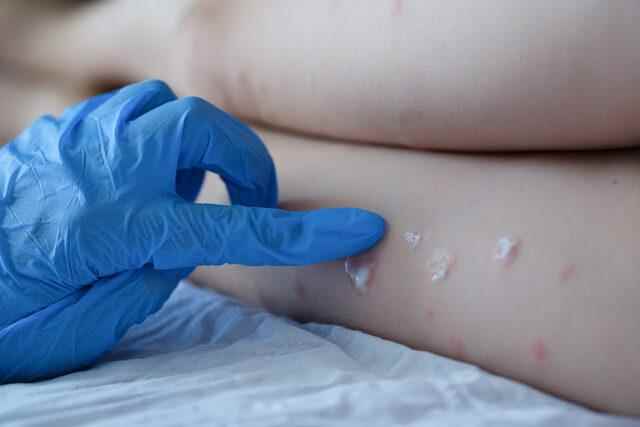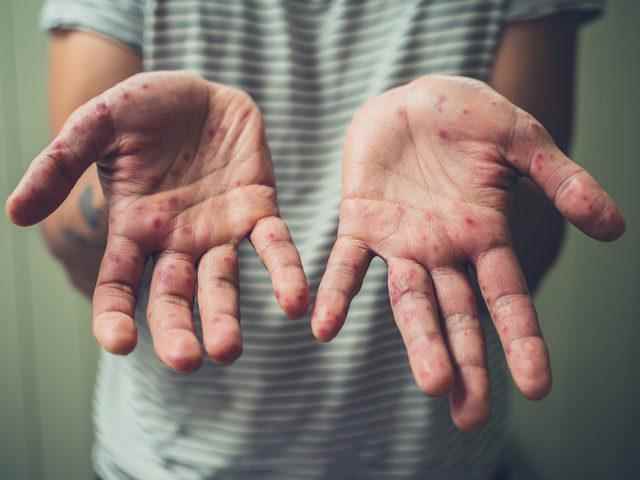Yasemin Artunc / Mynet Special Monkeypox virus continues to spread worldwide. The number of cases of monkeypox virus, which is transmitted from animals to humans and has gained the ability to pass from humans to humans in recent years, is increasing day by day. The developments regarding the monkeypox virus, which is not seen in our country, are followed closely. Acıbadem Taksim Hospital Infectious Diseases and Clinical Microbiology Specialist Prof. Dr. Çağrı Büke answered Mynet’s questions.
WHAT IS THE MONKEY FLOWER VIRUS?
The causative agent of monkeypox is a DNA virus and belongs to the Ortopoxvirus species belonging to the Poxvirus family. This species especially likes to involve the skin. Unlike smallpox from the same species, monkeypox virus has an animal reservoir. Therefore, it causes a zoonotic infectious disease transmitted from animals to humans. The name “monkey pox” was given because the virus was first isolated from primates in Denmark in 1958, but the main reservoir is a squirrel or a rodent. The disease was first observed in humans in 1970 in a nine-year-old child in the Democratic Republic of Congo.
Today, there are two different strains of monkeypox virus. The first of these is the “West African” strain; It is common in Nigeria, Liberia, Sierra Leone and Ivory Coast. This is the strain currently seen in Europe and has a mild course. The mortality rate in infections that develop with it is 1%. The second strain, “Congo Basin”, is detected in the Democratic Republic of Congo, Republic of the Congo, Central African Republic, Gabon and also Cameroon. With this, more severe clinical pictures occur and the mortality rate in related infections reaches 10%.
IS THERE A POSSIBILITY TO SEE THE MONKEY POLO VIRUS IN TURKEY?
Although the Congo Basin strain has not been transmitted outside of Africa to date, the West African strain entered the United States in 2003 due to importation of infected animals. None of the monkeypox disease seen in humans during this period was transmitted from person to person. In 2017, there was an epidemic in Nigeria, in which a large number of cases were seen after 40 years. The peculiarity of this epidemic was that the disease was previously seen in settlements close to forest areas, but with this epidemic, the disease began to be seen in urban areas of Nigeria. This situation was also seen in Singapore, Israel and England, through those who returned from Nigeria in 2018. A hospital cleaner in England contracted Monkeypox after cleaning a patient’s bed. In 2021, cases related to passengers returning from Nigeria and the USA were detected in the UK again.

Although the last case detected in England on 7 May 2022 was a person from Nigeria, none of the cases that emerged afterward could be in contact with this case or any other traveler. This situation, which has recently emerged, brings to mind that monkeypox disease has different transmission routes. Countries that have reported cases outside the UK since this date until 22 May 2022; Canada, Spain, Sweden, Portugal, Austria, Belgium, France, Germany, Italy, Netherlands, United States, Israel and Switzerland.

No case of monkeypox has been reported from our country yet. In today’s world, where the number of cases and countries reporting cases is increasing day by day, it should be kept in mind that there may be a possibility of the disease in Turkey when it is known that there are various ways of transmission of the disease.
WHAT ARE THE SYMPTOMS OF MONKELOOM VIRUS?
The time from infection until the first symptoms appear is relatively long. This period can vary between 5 and 21 days. The first symptoms are high fever, headache, enlarged lymph nodes, back pain, muscle and joint pain, weakness and fatigue. With the onset of these symptoms, the contagiousness of the disease begins. These complaints usually last two days. After that, skin rashes begin. Skin rashes first appear on the face. It then gradually spreads throughout the body. Skin rashes called macules, papules, vesicles and pustules may also develop on the mucous membranes of the mouth and genital tract. Rashes on the skin are painful and even itchy. The disease continues for an average of 2-4 weeks. It usually resolves on its own afterward. The disease continues to be transmitted by contact with lesions on the skin and mucous membranes until the rashes on the skin and mucous membranes dry and turn into crusts.
IS THE MONKEY POLO VIRUS KILLABLE?
Various complications may be encountered during the course of monkeypox. In cases where the lesions on the skin are numerous and widespread, fluid loss causes dehydration. In addition, secondary bacterial infections of the skin may develop with itching of the lesions. In addition to bacterial superinfection of the lesions and septicemia, eye and corneal lesions may develop, which can lead to vision loss. Encephalitis (brain inflammation) has also been reported.
Although the infectious disease caused by the monkeypox virus is generally mild, the disease is severe and life-threatening in children and in cases with underlying immunosuppressive disease or those receiving such treatments. The West African strain is the strain currently seen in Europe, with a mortality rate of 1% in infections with it. Mortality rate reaches 10% in infections caused by the “Congo Basin” strain.
HOW TO TAKE MEASURES AGAINST THE MONKLE POLO VIRUS?
The disease is mainly transmitted to humans from wild animals such as monkeys, rats and squirrels, rodents and primates. Direct contact with the skin, mucous membranes, blood and other body fluids of infected animals plays a role in transmission. It should be kept in mind that there is a low probability of contamination by eating undercooked meat products of infected animals.
Respiratory droplets play an important role in the transmission of the disease from person to person. Prolonged exposure to these droplets is a risk of contamination. Apart from this, contact with lesions on the skin and mucous membranes also plays a major role in the transmission of the disease. In this respect, it should be kept in mind that the disease can be transmitted through sexual means. The wearing of the clothes that have come into contact with the body and mucous membranes of the patient, and the use of bed and sheet covers by someone else also play a role in the transmission of the disease to people.
It is thought that the cases that emerged in Spain and Italy today may be due to the festival that brought together 80,000 people in the Canary Islands between 5 May and 15 May. Again, it is taken into account that a sauna may play a role in the emergence of cases in Spain.
What needs to be done now is to limit the spread of the virus, detect all cases quickly and trace contacts; to inform and raise awareness of the society and people about the disease, the ways of its transmission and the methods of prevention. As important as this is, updating the knowledge of physicians about their approach to diagnosis and differential diagnosis of this new disease. Rapid identification and identification of people who have the disease and isolating these cases for an average of three weeks are critical in preventing the spread of the disease.
